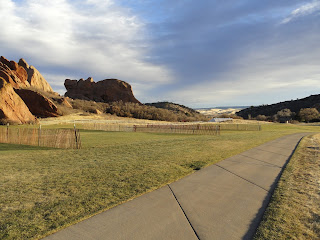Our first major task is applying all the fungicide and anti-desiccants to the greens, tees and fairways. You have to make sure you get great contact to all surfaces of the plant blade, so all surfaces must be clean of debris such as leaves, sticks and pine needles. This task can take up to several days to accomplish due to the nightly wind.
The seconds step is very labor intensive as we will install snow fence around the course. We strategically place fence on the course to capture the blowing snow. Due to the nightly wind, any snow we get has a great potential of blowing off the surface. The snow fence will disrupt the wind to allow the snow to pile up and form snow drifts. These snow drifts keeps the turf covered to help prevent the grass from drying out (winter dessication.)
This year after taking classes at our local turf show and conference, I learned another approach to snow fence. We always do a lot of tree work in off-season, so why not use tree branches as snow fence. We tried this approach on the #6 forward tee. Lets see if it works.
At some point when the weather forecast looks like it will be cold for a extended time, we will prepare the irrigation system to be blown out with compressed air. The day prior to blowout, we will drive around the course and close all the air relief valves. The valves play an important role with the function of the system. When we are pressurized up during the warmer months, these valves will allow air to move out of the system while keeping in the water. During blowout, we close the valves to make sure no air leaves the system. We also manually drain the system of water through quick couplers. During the blowout, 3 of us will be on the course to operating the satellite boxes and one of us at the pump house making sure we do not get to high on pressure. Air can compress more than water so we like to blow out at 1/4 to 1/2 of the working pressure (about 30-55psi.)
No matter what we do sometimes damage and turf loss occurs. We try to be as preventative as possible, but sometimes you never know what mother nature will give you.







No comments:
Post a Comment